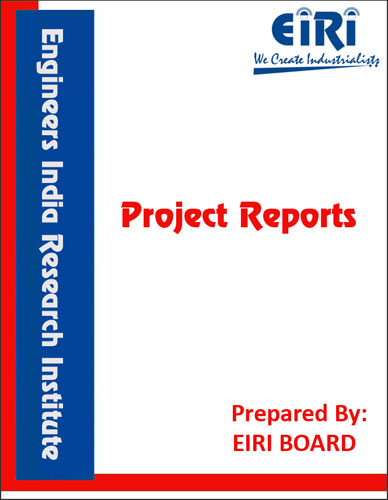VERMI-COMPOSTING
The project report includes Present Market Position and Expected Future Demand, Market Size, Statistics, Trends, SWOT Analysis and Forecasts. Report provides a comprehensive analysis from industry covering detailed reporting and evaluates the position of the industry by providing insights to the SWOT analysis of the industry.
We can prepare PROJECT REPORT as per your INVESTMENT PLAN for BANK LOAN REQUIREMENT and INDUSTRY ANALYSIS. All reports are prepared by highly qualified consultants and verified by a panel of experts.
Have Query? Click Here to Chat
Industry Expert is Online, Chat with him for more detail.

The various organic wastes including farm yard manure is fed by earth worms and they excrete out the fine mucus coated faecal pellets called vermicompost and the process is called vermicomposting. There is a great demand of this project. Vermiculture refers to culturing of earthworms for diverse purpose, major one being vermicomposting. Through the simple act of eating, earthworms promote bacterial growth, enhance soil structure and hasten the decomposition of organic matter. The process of composting crop residues/agri wastes using earthworms comprise spreading the agricultural wastes and cow dung in gradually built up shallow layers. The pits are kept shallow to avoid heat built-up that could kill earthworms. To enable earthworms to transform the material relatively faster a temperature of around 300C is maintained. The final product generated by this process is called vermicompost which essentially consist of the casts made by earthworms eating the raw organic materials. Earthworms can be sold to the following markets: Bait and tackle shops Large-scale vermicomposting facilities Worm growers just entering the business Institutions and businesses that do on-site vermicomposting of their food scraps and other organic materials (includes prisons, hospitals, schools, colleges and universities, restaurants, grocery stores, office buildings, etc.) EIRI have prepared the project report on Vermi-composting for the entrepreneurs who wish to start this unit. Farmers desiring to vermicompost animal manure (including livestock and poultry farms, rabbitries and horse stables) Composters, organic gardeners or fisherpeople wanting to raise worms for their own use Growers with orders too large to fill from their own stocks Private laboratories, universities, and high schools for research and classroom needs.
Each ‘EIRI’ MARKET OVERVIEW CUM DETAILED TECHNO ECONOMIC FEASIBILITY REPORT (Complete Report) tentatively covers
• Introduction
• Properties
• BIS (Bureau of Indian Standard) Specifications & Requirements
• Uses & Applications
• Present Indian Market Overview/Position
• Export & Import Statistics Data
• Names and Addresses of Existing Units (Present Manufactures)
• List of Plant & Machineries
• Miscellaneous Items and Accessories
• Instruments, Laboratory Equipments and Accessories
• Electrification, Electric Load and Water
• Maintenance, Suppliers/Manufacturers of Plant and Machineries
• Manufacturing Process with Formulations (If applicable)
• Flow Sheet Diagram
• List of Raw Materials
• Availability of Raw Materials
• Requirement of Staff & Labour
• Personnel Management
• Skilled & Unskilled Labour
• Requirement of Land Area
• Built up Area
• Plant Layout
Along with financial details as under:
• Summary of Capital Cost of Project
• Land & Side Development Exp.
• Buildings
• Plant & Machineries
• Misc. Fixed Assets
• Technical Know how Fees & Exp.
• Preliminary Expenses
• Pre-operative Expenses
• Provision for Contingencies
Below mentioned financial statements (Annexure) will be for 5 to 10 Years
• Annexure:: Cost of Project and Means of Finance
• Annexure:: Output, Profitability and Cash Flow Chart
• Annexure:: Assessment of Working Capital requirements
• Annexure:: Sources of Finance
• Annexure:: Balance Sheets
• Annexure:: Break-Even Analysis and profitability analysis.
• Annexure:: Quantitative Details-Output/Sales/Stocks
• Annexure:: Sales Realisation
• Annexure:: Raw Material Cost
• Annexure:: Other Raw Material Cost
• Annexure:: Packing Material Cost
• Annexure:: Consumables, Store etc.,
• Annexure:: Employees Expenses
• Annexure:: Fuel Expenses
• Annexure:: Power/Electricity Expenses
• Annexure:: Repairs & Maintenance Exp.
• Annexure:: Other Mfg. Expenses
• Annexure:: Administration Expenses
• Annexure:: Selling Expenses
• Annexure:: Depreciation Charges – Profitability
• Annexure:: Depreciation Charges
• Annexure:: Interest and Repayment – Term Loans
• Annexure:: Tax on Profit
• Annexure:: Assumptions for Profitability workings
• Annexure:: Assessment of Working Capital



